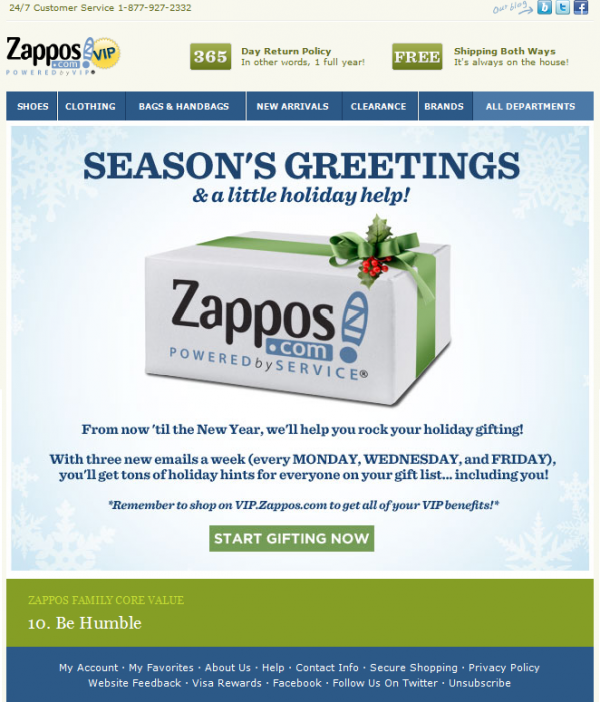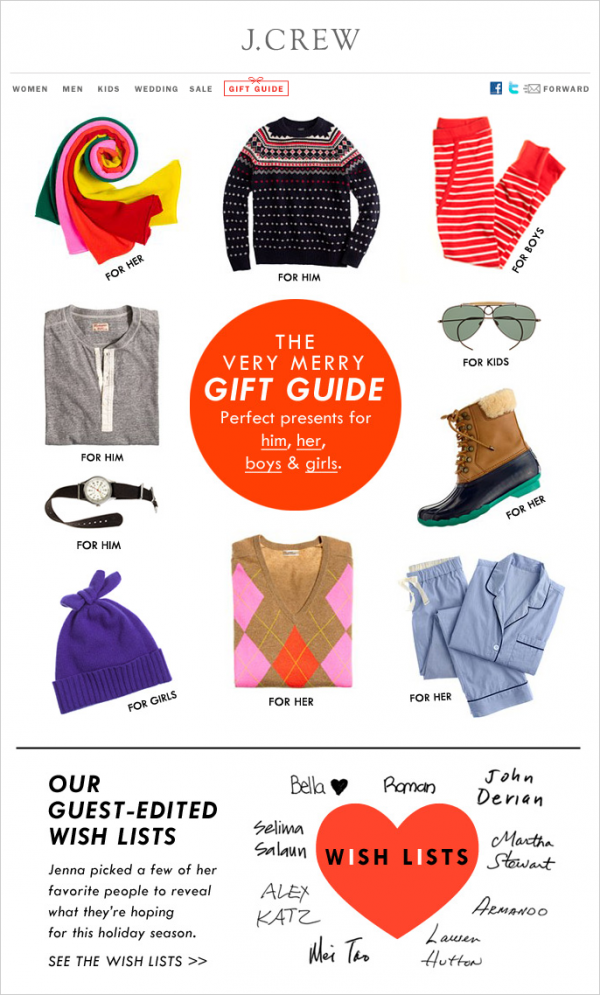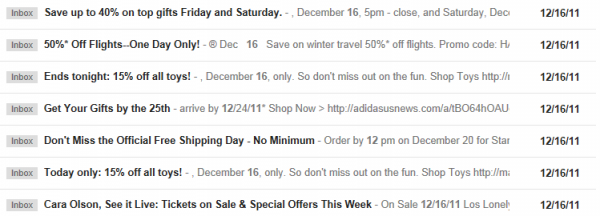5 Keys To A Successful Holiday Email Strategy
- Fahad H

- Sep 13, 2012
- 5 min read
You may not want to start counting the days until your in-laws arrive, but email marketers know that Black Friday and Cyber Monday are just around the corner. After all, Christmas is just over three months away!
Following are five keys to a successful holiday email strategy for you to focus on — it’ll distract you from the impending family invasion about to ensue.
1. Draft Your Schedule
Increasing your frequency during holiday is a given. Many retailers will be sending every single day. Some retailers will be sending multiple times a day. Simply put, those who do not change their frequency at all are leaving money on the table.
While we could debate the ideal number of times to send between now and the end of the year, at minimum you will want to focus on certain key dates.
The two important, and well-known, high-volume email days are Black Friday and Cyber Monday, but there are quite a few others that are just as critical to holiday revenue. The first two Mondays in December are typically high volume email days, with the second being Green Monday when the majority of retailers offer discounts on shipping when it still falls within standard delivery times for Christmas.
It is smart to target emails for your each of your shipping cut-offs to remind customers of their last chance to take advantage of standard, 2-day and overnight shipping deals.
According to Bronto, in 2011, Friday December 16th marked the highest volume email day of the entire season. And, while Christmas always falls on December 25, keep in mind that Hanukkah dates change each year. This year Hanukkah is December 8 – 16th.
2. Update Your Acquisition Tactics
Hopefully you’ve been busy growing your list throughout the year, scoring subscribers and identifying segments. If you plan to significantly increase frequency, like sending multiple times a day or sending a “daily deal” type of campaign, then I highly recommend asking subscribers to opt-in to a separate list, specific to receiving additional emails during holiday.
This can be as simple as offering two check boxes for opt-in during sign-up; one for the promotional sends and one for exclusive, additional holiday emails. For existing subscribers you can include a call-out in ongoing emails between now and your holiday campaigns.
Here is an example of a supporting promotional section from a Crocs (a client at the company where I work, Digital Evolution Group) email asking subscribers to sign up for specific Black Friday deals.

These subscribers who opt-into greater frequency will be more engaged and less likely to unsubscribe or report the emails as spam. If you can’t logistically accommodate a separate opt-in request, then at least let subscribers know they will be seeing more of you in their inbox, like in this example from Zappos.

Holiday is also a time when many new visitors are coming to your site or store for the first time. Work with the web team to ensure the email sign-up is prominently located on the home page (preferably at the top), and during check out on the site (preferably early to allow for abandoned cart emails). Incentivize and train sales associates to ask for email addresses during checkout in-store.
Review the welcome series content, creative and cadence and update to be appropriate for holiday. For example, the sign-up offer should be just as, if not more, compelling than the current offer promoted on your site. In the welcome content, ask who the subscriber is shopping for and tailor subsequent messages with appropriate products.
3. Begin Product Selection
Determining what products and promotions are featured in the emails begins now. Take note of top products and promotions clicked in emails from previous years. Identify your best sellers online and in-store last year. Create a segment of the subscribers that purchased during holiday last year, noting when and what they purchased.
Meet with merchandising to create a plan that includes products that generate click-throughs via email. Gift guides generate response by making shopping easier for the customer (Gifts for Him, Gifts for Tweens, Gifts under $100, and so on), like in this example from J.Crew.

Identify inventory minimums required for promoting a product through email based on sales from previous years, to limit sell-outs. Create a back-up inventory plan, so in the event that a product does sell out you can offer the customer an alternative similar product.
4. Design For Winter
Part of your schedule should include when to change the look and feel of your emails from your traditional look-and-feel to a holiday theme. This generally includes updating the header of your emails to include holiday colors and gift-focused navigation, like in these Helzberg Diamonds examples from previous years (Helzberg Diamonds is a client where I work, Digital Evolution Group).



Before the holiday madness you can also design and build the banners or pods to call out shipping date cut-offs, typically displayed in the header or towards the bottom of the email, like in this example from Crate and Barrel.

You will also want to consider building a few additional templates now to leverage during the holiday season. One template should be designed so it is easy to change a product image or description, in case inventory is not available at the last minute, or if a price changes.
Another template may be designed for a simple but powerful message, allowing you to quickly send out a last-minute email campaign when necessary. All emails should be designed to render appropriately on mobile devices, which may warrant recoding a template to employ responsive design.
Don’t forget to optimize the creative in transactional and triggered emails as well. If a transaction was selected to be a gift, update the order confirmation with an upsell to “get something for yourself.” Evaluate the copy in the rating and review triggered email, keeping in mind that the product purchased could have been a gift, and not used by the purchaser himself.
5. Be Different
How are you planning to be different? Because holiday is a time of very high volume, the inbox is very competitive. Subject lines are critical during this time of year. Which of your emails had the highest open rates last year? Which subject lines have been your best performers to date this year?
It may seem like your subject line is great, until it sits next to 10 others in the inbox. This screen shot taken from a peak period last year, shows how similar many subject lines can be, and one retailer even appears to have accidentally included me on both versions of an A/B test.

Furthermore, without the context of the from name, many of these subject lines could be from any retailer.

Why should a subscriber open your email first? Start writing creative copy now.
Once your email is opened, what will entice the user to click instead of closing the email and opening the next? Offering free shipping is no longer unique. What makes your email more compelling?
This is not meant to imply that every email should have an offer or promotion. What is the value of your content to the subscriber? Challenge your strategy and creative team to be better this year. Be different. Stand out.
Ready. Set. Go.
Both the positive and negative side of email is its ability to be last minute. It’s never too early to start planning. Evaluate and adjust as the season progresses and make changes as necessary if the original plan isn’t generating the intended results. Cheers to a successful holiday email season, and surviving the family gatherings!








Comments